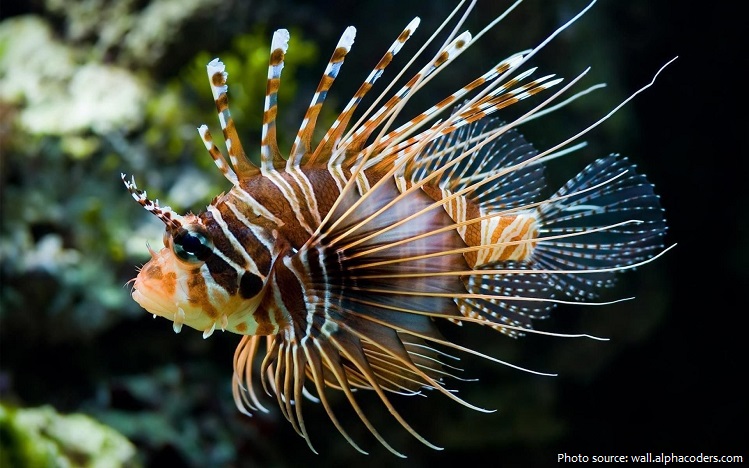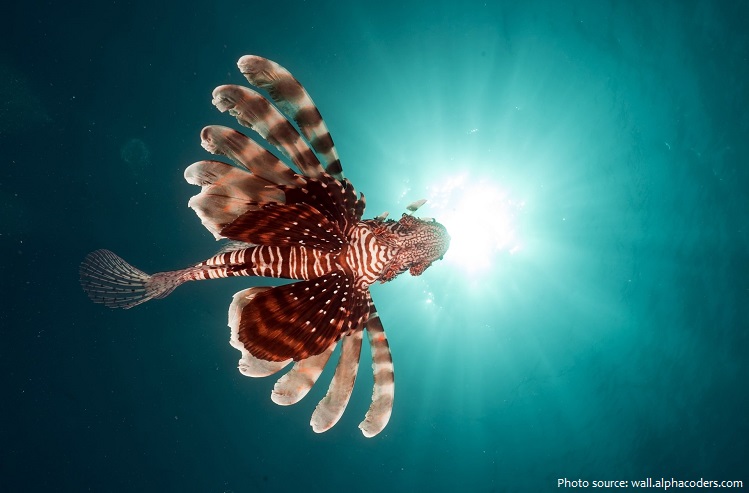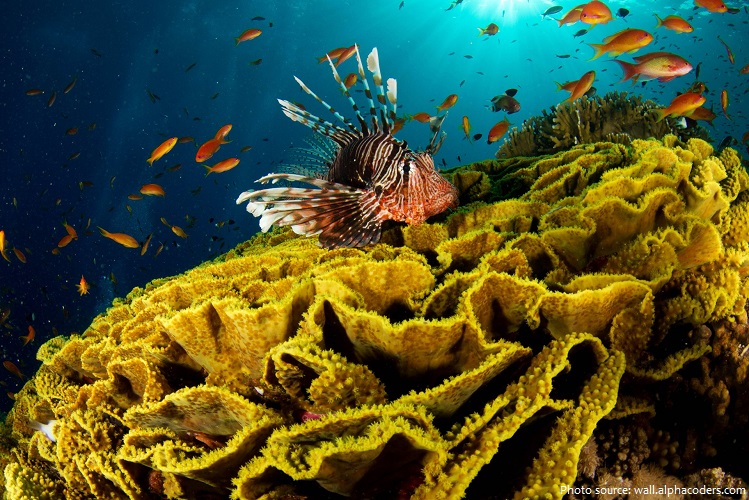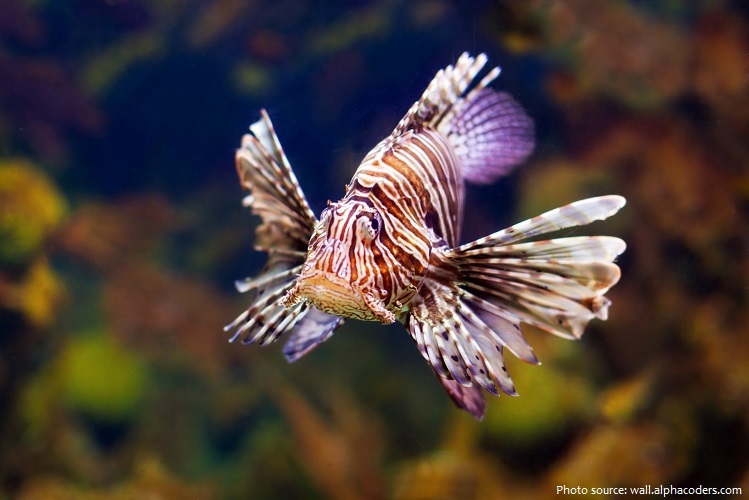Lionfish also called zebrafish, firefish, turkeyfish, tastyfish or butterfly-cod is any of several species of showy Indo-Pacific fishes of the scorpion fish family.
There are twelve species of lionfish.
They have lifespan from 5 to 15 years and have complex courtship and mating behaviors.
They can be found around the seaward edge of reefs and coral, in lagoons, and on rocky surfaces commonly from 1 meter (3 feet) to 50 meters (164 feet) deep, although lionfish have on multiple occasions been recorded to 300 meters (984 feet) depth.
Lionfish range from 5 to 45 cm (2.0 to 17.7 in) in length, weighing from 0.025 to 1.3 kg (0.055 to 2.866 lb).
They have distinctive brown or maroon, and white stripes or bands covering the head and body.
Lionfish are noted for their venomous fin spines, which are capable of producing painful, though rarely fatal, puncture wounds. The fishes have enlarged pectoral fins and elongated dorsal fin spines, and each species bears a particular pattern of bold, zebralike stripes. When disturbed, the fish spread and display their fins and, if further pressed, will present and attack with the dorsal spines.
Lionfish are not poisonous, they are venomous. The difference between poison and venom is the method of delivery. Venom must be injected into the bloodstream to cause injury, such as through a sharp spine or fang, but is harmless if drunk or eaten. Poison has to be ingested or absorbed to be harmful; lionfish carry no poison in the edible meat of the fish.
The venom found in the needle-sharp dorsal, pelvic and anal fins of a lionfish is not deadly to an otherwise healthy human being, though envenomation will cause an immense amount of localized pain, swelling and, in some instances, blistering and infection if not treated properly.
For the majority of their adult lives, lionfish are solitary and will fiercely defend their home range against other individuals of both the same or different species, using their poisonous dorsal spines. Males are more aggressive than females. As their name suggests, they are fearsome predators.
Lionfish are predators that consume more than 70 species of fish and many invertebrate species such as shrimp and crab. Lionfish can reduce juvenile fish populations on a reef by nearly 90% in as little as five weeks. Lionfish can eat up to 30 times their own stomach volume.
Lionfish are nocturnal and most active during dawn and dusk, which coincides with the peak activity of reefs where diurnal crustaceans are retreating and smaller nocturnal fishes are becoming active.
Studies in the Pacific shows that it is the males that start off the act of courtship. The males use their spines and fins in a visual display to intimidate their rivals but attract potential mates. This whole process goes on for days until hopefully if the male has been successful the female will join the male for a spawning dance. Females release two mucus-filled egg clusters frequently, which can contain as many as 15,000 eggs.
The eggs hatch into larvae in a very short space of time – approximately 24 – 36 hours. The larval duration of the microscopic size larvae is approximately 25 to 30 days. After just three more months the lionfish are a mini version of their parents.
Natural predators of lionfish include sharks, cornetfish, grouper, large eels, frogfish and other scorpionfish. There is speculation that large snapper and some species of trigger fish eat lionfish in their native ranges as well.
When properly filleted, the naturally venomous fish is safe to eat.
In 2010, NOAA began a campaign to encourage the consumption of the fish. The “Lionfish as Food” campaign encourages human hunting of the fish as the only form of control known to date. Encouraging the consumption of lionfish could not only help to maintain a reasonable population density, but also provide an alternative fishing source to overfished populations, such as grouper and snapper.
The NOAA calls the lionfish a “delicious, delicately flavored fish” similar in texture to grouper. Recipes for lionfish include deep frying, ceviche, jerky, grilling, and sashimi.
The lionfish is a popular aquarium fish around the world, although the lionfish is better kept in tanks with lots of space and few other fish.




